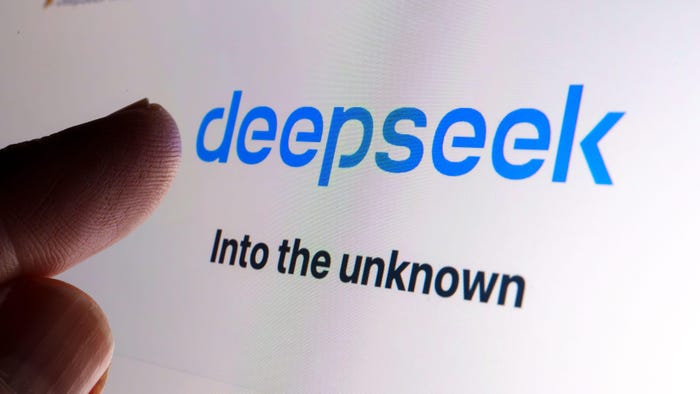Abandoned AWS Cloud Storage: A Major Cyberattack VectorAbandoned AWS Cloud Storage: A Major Cyberattack Vector
New research highlights how bad actors could abuse deleted AWS S3 buckets to create all sorts of mayhem, including a SolarWinds-style supply chain attack.
February 5, 2025

Abandoned cloud storage buckets present a major, but largely overlooked, threat to Internet security, new research has shown.
The risks arise when bad actors discover and re-register these neglected digital repositories under their original name, and then use them to deliver malware or carry out other malicious actions against anyone still requesting files from them.
A Far From Theoretical Threat
The threat is far from theoretical, and the weakness is, in fact, incredibly easy to exploit, researchers from watchTowr discovered recently. The findings came as a follow-up to previous research they conducted last year on risks tied to expired and abandoned Internet domain names.
For the latest study, the researchers first searched the Internet for Amazon AWS S3 buckets referenced in deployment code or a software update mechanism. They then checked to see if those mechanisms were pulling down unsigned or unverified executables or code from the S3 buckets. The researchers discovered some 150 S3 buckets that at some time a government organization, Fortune 500 company, technology company, cybersecurity vendor or major open source project had used for software deployment, updates, configurations and similar purposes, and then abandoned.
To check what would happen, watchTowr registered the unused buckets using their original names for a total of around $400, and enabled logging on them to see who might request files from each S3 bucket. The company also wanted to find out what these users would request from the storage resources. To their surprise, in a two-month period, the S3 buckets received a staggering 8 million file requests, many of which the researchers could have very easily responded to with malware or some other malicious action.
Among those requesting files from the abandoned S3 buckets were government agencies in the US, the UK, Australia, and other countries, Fortune 100 companies, a major payment card network, an industrial product company, global and regional banks, and cybersecurity companies.
"We were not 'sniping' S3 buckets as they were deleted, nor employing any 'advanced' technique to register these S3 buckets," watchTowr researchers said in their report. "We just ... typed the name into the input box, and used the power of one finger to click register."
WatchTowr's analysis showed the S3 buckets receiving requests for a wide range of files, including software updates; unsigned Windows, Linux ad macOS binaries; virtual machine images; JavaScript files; SSL VPN configurations; and CloudFormation templates for defining and provisioning AWS cloud infrastructure services as code.
Had the researchers wanted to, they could have trivially responded to any of these requests with things like a malicious software update, or a template that would have allowed them access to the requesting organization's AWS environment, or a backdoored virtual machine.
A 'Terrifyingly Simple' Cloud Cyberattack Vector?
"The main takeaway," says Benjamin Harris, CEO of watchTowr, "is the terrifyingly simple way by which hackers can create a major, SolarWinds-scale supply chain attack by abusing the relatively unknown vulnerability class of abandoned infrastructure."
While the study focused on AWS buckets, the same risks exist with any abandoned cloud storage resource that someone is able to find and re-register using the original name, according to watchTowr.
"This is certainly not an AWS issue," Harris tells Dark Reading. "However, what is vital is that AWS customers understand that once a cloud resource is created, leveraged, and referenced in code — for example, in a software update process, or in a deployment manual or otherwise — that reference will exist forever," he says. The implications of that reference will survive in perpetuity as the watchTowr study showed, he cautions.
According to Harris, watchTowr has tried to get AWS to stop allowing registration of S3 buckets under previously used names.
"We have repeatedly, like a broken record, shared our belief with the AWS teams that engaged with us that the most logical solution to the challenge here is to prevent the registration of S3 buckets using names that had been used previously," he says. This approach would entirely kill this vulnerability class — abandoned infrastructure — in the context of AWS S3 buckets.
"As always, there is likely an argument about the usability tradeoff, the ability to transfer S3 buckets between accounts, etc.," he adds. "But we do wonder if these requirements outweigh the impact we have demonstrated through our research."
AWS Responds to Abandoned S3 Bucket Threat
AWS itself quickly sinkholed the S3 buckets that watchTowr identified, so the attack scenarios the security vendor highlighted in its report won't work against the same resources, though the broader issue remains.
"The issues described in this blog occurred when customers deleted S3 buckets that were still being referenced by third-party applications," an AWS spokesperson tells Dark Reading. "After conducting their research without notifying AWS, watchTowr provided the bucket names to AWS, and to protect our customers, we blocked these specific buckets from being re-created."
A statement the person provided mentioned guidance that AWS has provided customers on best cloud bucket practices, and on using unique identifiers when creating bucket names to prevent unintended reuse. The company has also provided guidance on ensuring applications are properly configured to reference only customer-owned buckets, the statement said: "In 2020 we launched the bucket ownership condition feature and encouraged customers to use this mechanism, specifically designed to prevent unintended reuse of bucket names."
The statement went on to request that researchers engage with the company's security team before conducting research involving the company's services.
About the Author
You May Also Like
Uncovering Threats to Your Mainframe & How to Keep Host Access Secure
Feb 13, 2025Securing the Remote Workforce
Feb 20, 2025Emerging Technologies and Their Impact on CISO Strategies
Feb 25, 2025How CISOs Navigate the Regulatory and Compliance Maze
Feb 26, 2025Where Does Outsourcing Make Sense for Your Organization?
Feb 27, 2025




